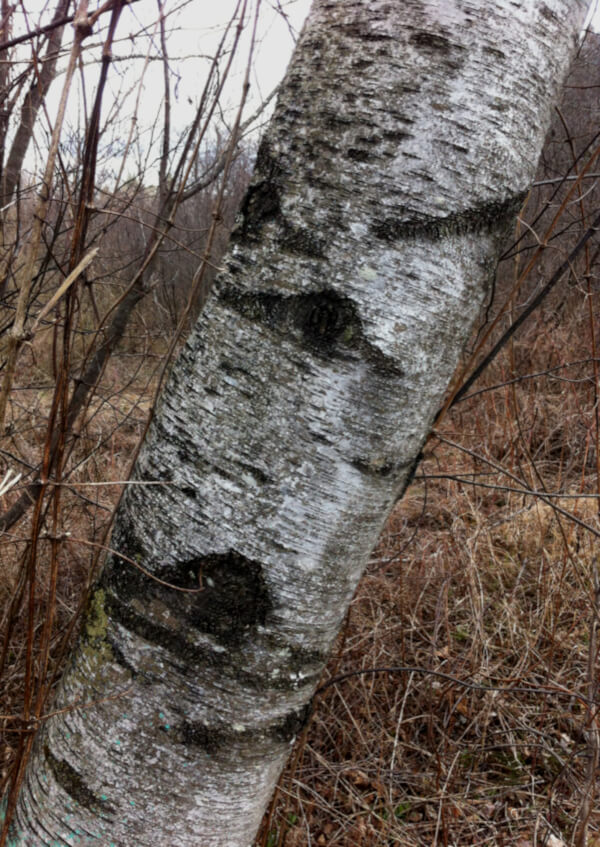In this column, we are going to revisit the porcupine (Mi’kmaq: matues) and its colourful quills.
In particular, we are going to look at the sources of violet (nisqunanamu’k) and blue (musqunamu’k) pigments. The red (mekwe’k) and yellow (wataptek) quill colours came from plants but we may have to wade in the Bras d’Or estuary to find a source of blue or violet.
My search for the source of these pigments has led me through the forests to the seashore and into the published works of early missionaries and modern scientists. Your first thought may be that the abundant blueberry is a source of blue pigment for dyeing porcupine quills. You are partially correct.
In a large scientific study, Christina Cole and Susan Heald visited five museums in Canada and the United States, and analyzed samples of dyed porcupine quills from their collections. They found a plant pigment that is common in wild berries (anthocyanidin) in nearly 75 per cent of the blue or purple quillwork analyzed.
Now, this result is a bit of a surprise for natural dyers who know that berries produce vibrant but fleeting colours. It must have required a rather sophisticated chemistry to produce a lasting blue or purple dye from berries.
The story of blue and violet does not end there. Wilson and Ruth Wallis, a well-known pair of anthropologists, put together a list of natural quill dyestuffs that were in use in the Mi’kmaw community of Burnt Church (Esgenoopetitj) in 1911. Purple was reportedly obtained by boiling the bark of malsenawei from half to one hour. Tom Johnson tells me that the term ‘malsenamei’ means weak or inferior sugar maple.
There have been other reports of tree bark pigment extraction from journals of missionaries Lescarbot and LeClercq in the seventeenth century. Blue pigments were often obtained from a concoction of the bark of the wire birch (sepqoqiajk). The wire birch is not the familiar paper birch (maskwi) but it is easy to confuse the two species. The wire birch, which is common in our biosphere, is also called the grey birch and is distinguished from the common paper birch by the dull white colour of the bark and dark triangular patches below the insertion point of the branches on the trunk.
The bark adheres closely to the trunk of the tree and does not peel easily. It was not so useful in the building of early canoes but it made a great source of dye. So, in the development of violet/ blue colour on porcupine quills we have potential involvement of wild berries and tree bark.

This is a picture of a wire, or grey, birch trunk.
Another identified source of the violet/ blue tint may be quite a surprise to you. According to a manuscript published by Nicolas Denys in 1672, violet dye for quillwork was derived from a common dogwinkle found in many sheltered marine and estuarine shores (scientific name: Nucella lapillus).
Keep your eyes open for this little snail. It is cone-shaped with spiral ridges and a short pointed spire, up to three centimetres in height by two centimetres in width. The shell colour can be white, grey, brown, or yellow, sometimes with contrasting (usually brown) spiral banding. The dogwinkle (or dog whelk) is a predator, feeding on other shellfish such as the common mussel and periwinkle. It likes to live on rock rather than sand and gravel and is abundant in some areas such as Grand Narrows and Ross Ferry, often hiding under seaweed.
This same species of dogwinkle occurs in Europe and has been a source of dye there over a long time span ranging from the first century BC. It seems that the colourful glands of many marine snails were utilized extensively over broad geographic ranges to brighten the lives of many.
A close relative, the Murex snail, was the basis of a purple dye industry (Tyrian or Royal purple) which was in full swing the Mediterranean by 1700 BC and continued on a massive scale until the overthrow of the last remnant of the Roman Empire at Constantinople in 1453 AD. So, it turns out that blue/ violet quillwork is a lot more interesting than you perhaps once thought.
If you are strolling around the forests and shores of our Biosphere, take note of the wire birch and the dogwinkle. Then upload your photos to: I Naturalist (https://www.inaturalist.org/), a web-based platform which is very easy to use.
Dr. Annamarie Hatcher is a consulting ecologist and a board member of the Bras d’Or Lake Biosphere Reserve Association.


